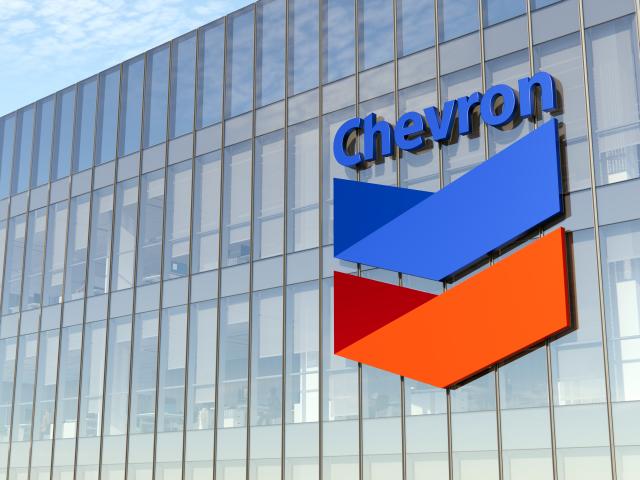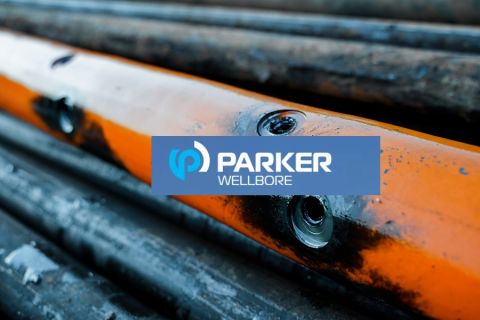
Chevron and other Big Oil companies have come under fierce criticism by Democrats that they are artificially keeping prices high, which those companies say is not true. (Source: askarim/Shutterstock.com)
FORT WORTH, Texas—After taking political fire that oil and gas companies haven't responded to commodity prices as they should, Steve Green, president of Chevron's North America E&P division, said he has recently spent time in the nation's capital trying to explain it's not that simple.
Chevron and other Big Oil companies have come under fierce criticism by Democrats that they are artificially keeping prices high, which those companies say is not true.
Even as Chevron announced at the end of April that it would increase production by 15%—a 5 percentage point increase from its initial 10% growth forecast—Green told an audience at Hart Energy's DUG Permian and Eagle Ford conference on May 17, that everything takes time, even ramping up shale production.
"That's frustrating to Washington right now because they mistakenly believe the industry can just run out, set up a bunch of rigs and grow production over night,” he said. Green said he visited Washington D.C. about a month ago to explain the company's position to President Joe Biden's administration.
The company has also been upfront and pubic about its commitment to adhering fiscal discipline, he said.
"I think every player in the sector now is focused on running their business with an eye on returns and earnings rather than just chasing a production number or how many rigs we have running,” he said. "That's not really our measure of success. It's what are earnings for our shareholders?”
Green drew a direct line to the current macro environment of commodity prices and the industry essentially taking "a year, year-and-a-half off from investments” due to the pandemic.
In Chevron's case, the company's plans were drawn well in advance of this year as it phased in increased production as global illnesses fell. Chevron had continued to drill wells during the height of the pandemic, but not completing them. It only began adding back production in mid-2021, largely using its stockpile of drilled uncompleted (DUC) wells.
"There was still a lot of uncertainty about what oil and gas demand was going to be” this year, Green said. After its initial growth target of 10% was set—and has already been exceeded—Chevron is now "well on our way to 15%,” he said.
Green added the company's DUC inventory was worked through quickly, which has allowed it to meet and revise its growth target. The company prefers to retain a small "margin” of DUC wells.
"We're a decline based business,” he said. "We'll have less to produce tomorrow than we have when we started today. If there's not a pattern of reinvestment and redevelopment, eventually production is going to decline.”
He also pointed toward a lack of stable policies and regulations that allow for sustainable investments in production. That will mean "you're going to see more excursions like this, where prices fly up and then the economy reacts and demand goes down and prices go down.”
Both the oil and gas sector and the economy would be better off, Green said, with a more consistent regulatory framework.
While Green said he has learned "painfully” that he cannot predict oil and gas prices, he said that the supply and demand fundamentals suggest bullish commodity prices will persist for some time. Partly that's due to geopolitical events, such as the war in Ukraine, and the continued recovery from the pandemic.
ESG
Green also addressed Chevron's environmental stewardship, reaffirming the mantra of Chevron CEO Mike Wirth that the company is committed to "higher returns, lower carbon.”
Chevron is trying to make environmental progress through a several avenues solutions, including adding solar power generation, using electric rather than diesel rigs and deploying an array of methane leak detection devices to lower its emissions.
"Currently we're not using any diesel rigs in the Permian,” he said, adding that the oil major is also committed to not turning on production without a "solution” to natural gas, meaning the "only natural gas flaring we do is [in the event of] upset conditions or safety issues.”
Green said he is hopeful that "we can make progress with some of our critics … if we just take the responsibility and run our business with … respect for the environment.”
M&A
Green said that the Permian has made a strong case for more than a century that it will be a reliable production source for years to come.
"Every time we've given it up for dead, it surprises us and technology unlocks new ways to produce and complete and economically produce it,” he said.
Green also said the Permian also complements Chevron's deepwater Gulf of Mexico investments. The Permian tends to be shorter-cycle, with less upfront capital demands that also given the company the flexibility to “moderate activity levels according to what supply and demand is.”
With more than 2 million acres in Texas and New Mexico, including positions in the Midland and Delaware basins, Green said Chevron has forecast that "we're going to have sizeable activity and production from the Permian for many decades to come.”
The company will continue to be engaged in dealmaking of one type or another.
"We're always in the market looking for additions to our portfolio. We make divestments from time to time as assets either are no longer strategic or don't offer us the growth platform that we're looking for,” he said.
Chevron also said that it makes trades or swaps with other operators. A broader lull in the shale M&A market isn’t necessarily a surprise to Green.
"It takes just that right alignment of sun moon and stars, if you will,” he said. "There's always consolidation in our industry always, but it's hard to predict any pace or when that might happen, because there has to be a fit for each company involved."
Recommended Reading
NOG Closes Utica Shale, Delaware Basin Acquisitions
2024-02-05 - Northern Oil and Gas’ Utica deal marks the entry of the non-op E&P in the shale play while it’s Delaware Basin acquisition extends its footprint in the Permian.
California Resources Corp., Aera Energy to Combine in $2.1B Merger
2024-02-07 - The announced combination between California Resources and Aera Energy comes one year after Exxon and Shell closed the sale of Aera to a German asset manager for $4 billion.
DXP Enterprises Buys Water Service Company Kappe Associates
2024-02-06 - DXP Enterprise’s purchase of Kappe, a water and wastewater company, adds scale to DXP’s national water management profile.
Pioneer Natural Resources Shareholders Approve $60B Exxon Merger
2024-02-07 - Pioneer Natural Resources shareholders voted at a special meeting to approve a merger with Exxon Mobil, although the deal remains under federal scrutiny.
Parker Wellbore, TDE Partner to ‘Revolutionize’ Well Drilling
2024-03-13 - Parker Wellbore and TDE are offering what they call the industry’s first downhole high power, high bandwidth data highway.






